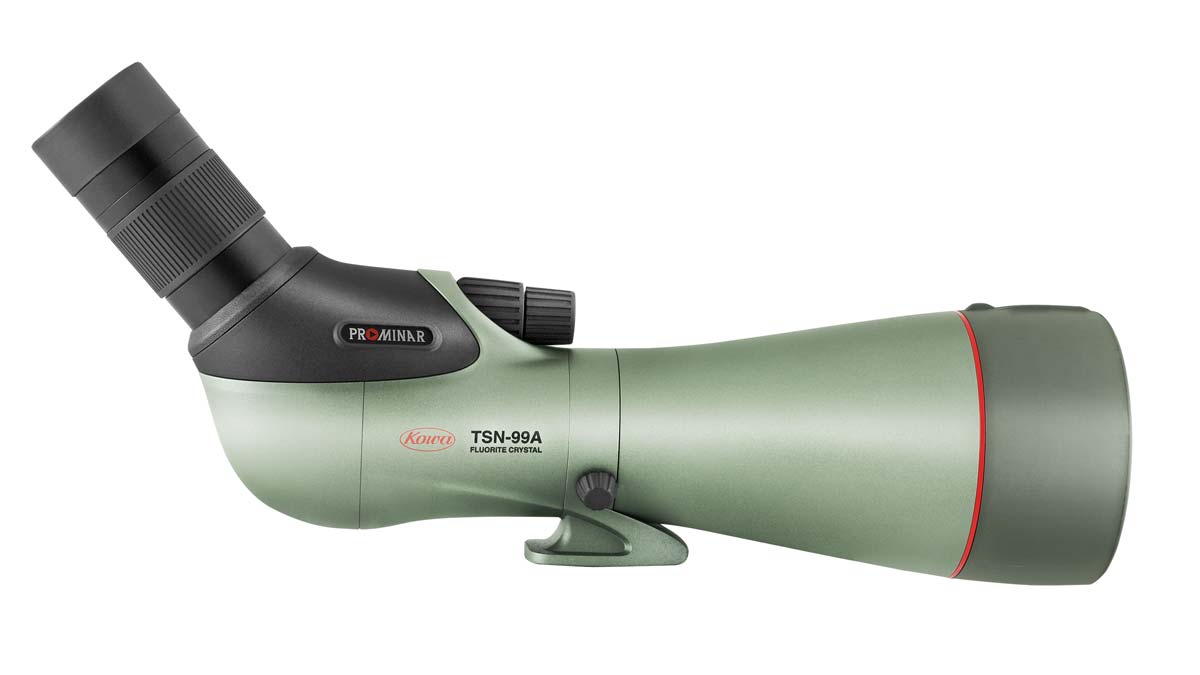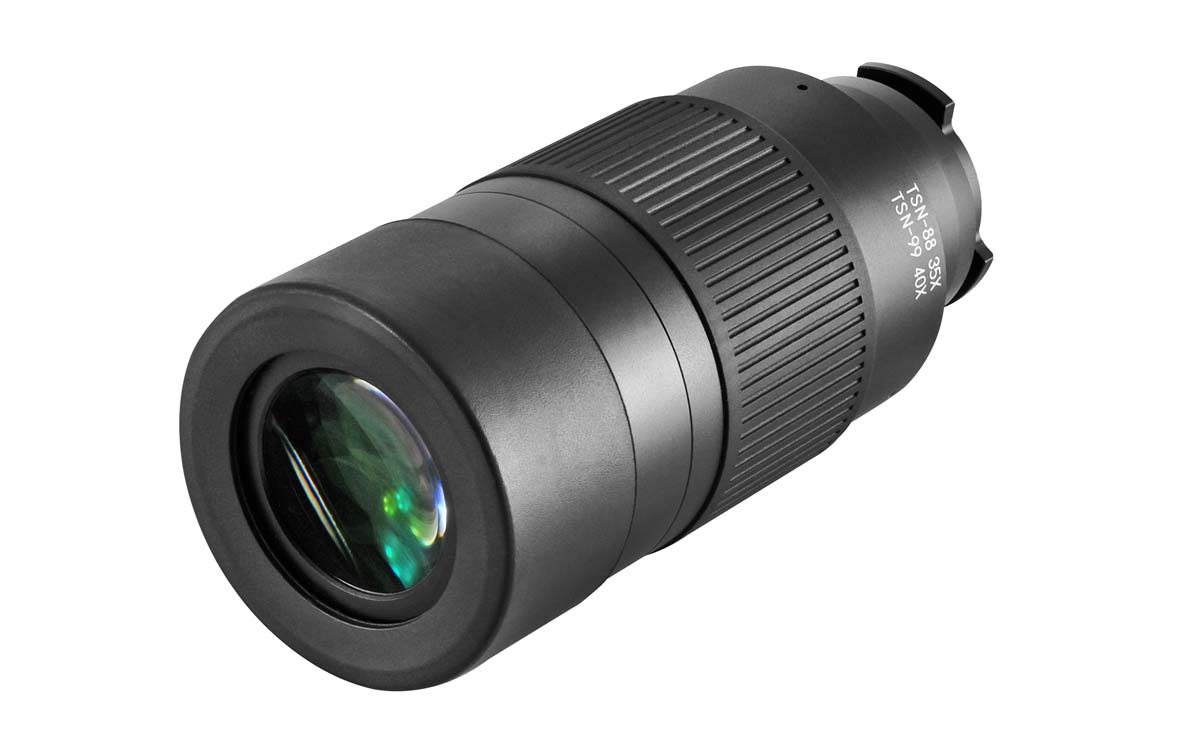Kowa TSN-99A Prominar telescope
Kowa: a name which has long been associated with top-quality optics – particularly telescopes – and one which fronts Japan's third-largest privately owned company.
It was back in 2006, at that year's Birdfair, when the Japanese manufacturer unveiled its renowned TSN-88 quartet, with the two top models, TSN 883 and 884, bearing the Prominar epithet and featuring fluorite crystal lenses with new coatings.
So successful were they, it was considered any change to their basic design was clearly unwarranted. Until now, that is. Fifteen years on and two new Prominar flagship models, the TSN-99A and TSN-99S, are set to continue the lineage in the sequential series 55, 66, 77 and 88, these numbers reflecting the diameter of the objective lens in each case.
Kowa's goal was to create a scope delivering outstanding low light performance and exquisite detail, free from chromatic aberration, as well as to deliver one of the brightest and widest fields of view.
Launched in September 2021, the two models went on sale the following month and while instantly recognisable from a brand perspective, they feature significant modifications designed to substantially enhance optical performance. Throw Kowa's brand-new TE-80XW 'extreme wide angle' eyepiece into the mix and you have the recipe for a first-class viewing experience.

In line with the majority of birders, I choose to use an angled body scope over one that is straight, so the 99A was the obvious selection for a test run.
Looking at the visible external differences from what we're used to on the smaller models, the most obvious one is the black rubber 'cloak' set above the prism housing which, as well as offering protection, also gives the 99 its own identity.
The rotating tripod foot also takes on a new shape and now includes an extra screw port which allows the scope to be attached using two screws to any quick release plate that also has this feature, thus increasing stability when mounted on a tripod. Aesthetically, there is a new 'swish' continuation contour from the tripod foot to the underside of the prism housing.
Also redesigned is the rubber-covered objective lens hood. It has a newly designed sight and the objective lens filter ring is now located on the body instead of on the hood. This means if a filter is fitted, it will not collect rain or dirt when the hood is fully extended.
Given that the 99 is a slightly larger scope, the body is wholly magnesium alloy, except for the tripod foot, which is aluminium. The body has the 'Kowa green' anodised finish. This offers a degree of weight reduction and differs from the 88 series, in which only the prism unit is magnesium alloy, the remainder being a heavier, aluminium alloy.
Internally, the prism assembly takes on a new, enhanced design, and behind the fluorite crystal glass objective is a new ED glass lens element – a further enhancement to significantly reduce chromatic aberration. The bottom line is there is no more, or less, glass in the 99 than in the 88 – it's simply better in terms of quality and new coatings have been applied to internal lenses to increase light transmission. All external lenses also have a hydrophobic coating to repel water.
So, what about eyepieces? Well, current units are interchangeable and the TE-11WZII 25-60x magnification eyepiece ramps up to 30-70x when used with the 99 because of the difference in focal length between this model and the 88. Those now in production also carry engraving to reflect this aspect.
The big, new TE-XW80 'extreme wide angle' eyepiece has a fixed magnification of 40x when used with the 99, has field flatteners integrated and currently boasts the widest field of view on the sporting optic market. It also has the option to fit a filter that moves with the eyecup.
Both eyepieces are bayonet fitted, remaining soundly locked in until released via a push button on the body.
In practical terms, a distillation of all the above features into field use delivers a mixed bag of overwhelmingly positive results.
While just shy of the 100 mm objective mark, at a length of 378 mm and a weight of 1,810 g, for me, the 99 doesn't come across as overly heavy or cumbersome and I didn't feel uncomfortable carrying it around. Bearing in mind the corresponding specifications of the 88 are 343 mm and 1,520 g respectively, there isn't a significantly larger burden to shoulder.

One aspect I have to mention, though, is balance. The wider and heavier distal end does cause the scope to easily tip forward when mounted on a tripod. This can be overcome if you have an Arca-Swiss style tripod head with a long-sliding plate or base. Personally, I would have liked to have seen the scope's tripod foot redesigned to give better balance and flexibility.
Another point to take into consideration is the design of the objective lens hood with respect to fitting the lens cover. Most birders will use and carry their scopes while birding in the rain, in which case they will invariably have the hood extended to help prevent water gathering on the lens. To block rain altogether, being able to fit the lens cover into the hood while it is extended is, in my experience, highly preferable. Unfortunately, this is not possible with the 99, which requires the hood to be retracted before the cover can be fitted.
Nevertheless, however important these two practical aspects may be to you, they pale against the overall optical performance of the scope.
I had the use of both eyepieces. The images delivered were nothing short of excellent – and I wouldn't have expected anything less. Starting with the zoom, a clean, bright image was evident across the entire magnification range. It was easy to obtain a sharp image, even at the highest value of 70x, through the use of the dual-focusing system, which operated swiftly and delivered rapid focusing while zooming in on specific subjects and out again into a wider field.
The image remained sharp to the edges, delivering true-to-life colours against an overall neutral rendition. Contrast was excellent and on one occasion I was able to pick out and identify a motionless Jack Snipe, half-hidden against similarly coloured vegetation at a range of more than 200 m. As the afternoon light slipped away, distant rafts of ducks were still identifiable on one of my local gravel pits and I was also able to obtain some very acceptable digiscoped shots of Western Cattle Egrets against the light, just before sunset.
The TE-80XW wide angle eyepiece displayed the same characteristics as above and the field of view at 40x magnification was admirable. There was no softening at its edges and the field-flattening element rose well to the challenge of eliminating distortion. Furthermore, I used Kowa's TSN-IP8 RP phonescoping adapter in combination with this eyepiece and there was no vignetting, so the requirement to 'stretch pixels' on your mobile phone's camera is neatly dispensed with.
Throughout my use of the TSN-99A and the above eyepieces, the one thing which never failed to impress was the incredibly low level of chromatic aberration in the image it delivers. It is almost non-existent and I have to say it's the lowest I have ever encountered since reviewing sports optics.
But that's what you're paying for with this equipment. At £2,999 for the scope body only, and £699 for the zoom, it's not what you'd call a steal, although if purchased together there is a saving of £120. All accessories are also available separately, including a stay-on case. But it is impressive …
Further info
- Price: £2,999 (body only); £699 (TE-11WZII eyepiece); £3,549 (both); £649 (TE-80XW eyepiece)
- Size: 378 mm (body only)
- Weight: 1,810 g (body only); 380 g (TE-11WZII); 485 g (TE-80XW)
- Field of view at 1,000 m: 35-20 m (TE-11WZII); 37 m (TE-80XW)
- Light transmission: not available
- Close focus: 6 m
- Gas-filled: yes
- Waterproof: yes
- Guarantee: 10 years, plus 5 years on free registration
Verdict
+ Image sharp to edge
+ Incredibly low chromatic aberration.
- Can tip forwards on tripod


